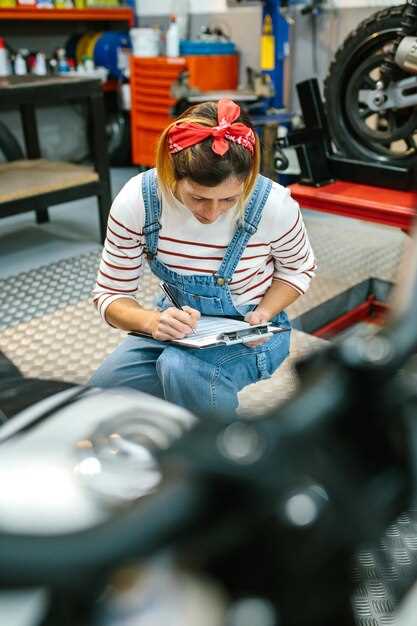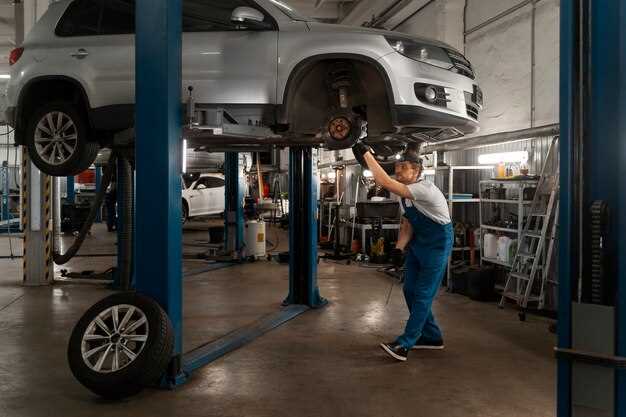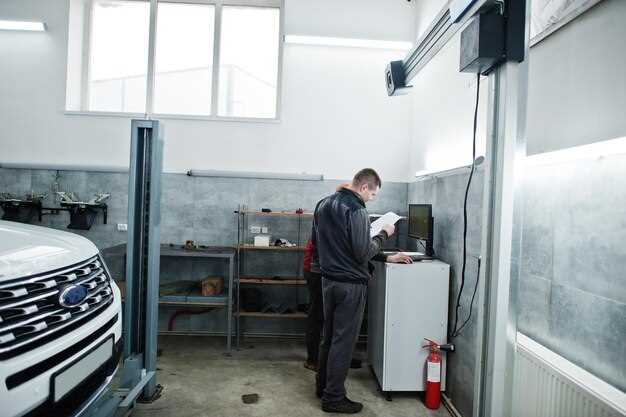
Transforming your home garage into a functional workspace for auto repairs and projects is a rewarding process that can enhance your skills and increase your productivity. A well-organized garage not only makes repairs easier but also creates an environment where creativity can thrive. Understanding the essential components of a successful setup is crucial for every car enthusiast or DIYer.
First and foremost, assess the setup of your garage. Consider factors such as space, lighting, and ventilation. Designing a layout that accommodates tools, equipment, and vehicle access can save time and prevent frustration during projects. Additionally, proper lighting ensures safety and accuracy when working on intricate tasks, while good ventilation helps dissipate fumes and keeps you comfortable.
Moreover, investing in quality tools and storage solutions is vital. A comprehensive tool collection tailored to your specific needs can make a significant difference in the efficiency of your repair tasks. Equally important is finding suitable storage options that keep your tools organized and easily accessible, enabling you to focus more on the project at hand rather than searching for equipment.
Finally, prioritize safety in your garage setup. This includes having a first aid kit, fire extinguisher, and proper personal protective equipment. Taking these measures ensures that you can work confidently and safely on your automotive projects, allowing you to enjoy the experience without unnecessary risks.
Choosing the Right Space for Your Garage Setup
The first step in creating an effective home garage setup for auto repairs and projects is selecting the appropriate space. Consider the size of the garage; you need enough room to accommodate your vehicle, tools, and storage for supplies. A minimum of 200 square feet is recommended for a comfortable working area, allowing you to maneuver freely and store equipment efficiently.
Accessibility is another crucial factor. Ensure that the garage is easily accessible from the street or driveway. This minimizes the hassle of transporting materials and tools back and forth. If possible, opt for a location with a level surface for easy vehicle entry and exit, which is vital during repairs.
Lighting plays a significant role in your garage setup. A well-lit space enhances visibility, making it easier to work on intricate tasks. Natural light through windows is an asset, but also invest in bright overhead lights and task lighting to illuminate darker corners and workbenches.
Ventilation should not be overlooked. Proper airflow is essential in preventing the buildup of fumes and ensuring a safe working environment. Installing windows or a ventilation system can help in maintaining air quality, especially when using chemicals or painting.
Finally, consider the climate control in your garage. If you plan to work year-round, think about insulation and heating solutions. A comfortable environment allows for longer and more productive work sessions, regardless of the weather outside.
Essential Tools Every Home Mechanic Should Have
Equipping your garage with the right tools is crucial for any home mechanic looking to perform auto repairs and projects effectively. Here is a list of essential tools that should be in every home mechanic’s toolkit.
1. Socket Set: A comprehensive socket set is fundamental for almost any automotive repair. Look for a set that includes both metric and standard sizes to accommodate various vehicles. Swivel and deep sockets will enhance your ability to reach bolts in tight spaces.
2. Wrenches: A set of combination wrenches is essential for loosening and tightening nuts and bolts. Include both open-end and box-end wrenches in your collection to handle different applications. Additionally, an adjustable wrench can be a versatile tool in your garage.
3. Screwdrivers: A quality screwdriver set should include various sizes and types, such as Phillips and flathead. Magnetic screwdrivers can help hold screws in place during installation or removal.
4. Pliers: A variety of pliers, including needle-nose, slip-joint, and locking pliers, are necessary for grip, twist, and cut. Each type serves a unique purpose, making them invaluable for any repair task in your garage.
5. Jack and Jack Stands: A reliable floor jack allows you to lift your vehicle safely for inspection or repairs. Always use jack stands when working underneath the car to ensure safety and stability.
6. Torque Wrench: This tool is critical for ensuring that bolts are tightened to the correct specifications. A torque wrench helps prevent damage to components from over-tightening, which can be especially crucial when working on engines.
7. Diagnostic Scanner: Modern vehicles often come with onboard diagnostic systems. A diagnostic scanner can help you read error codes, making it easier to troubleshoot issues and perform repairs efficiently.
8. Creeper: A mechanics creeper makes it much easier to work underneath vehicles by providing a comfortable place to lie down. This tool allows for greater mobility and accessibility during repairs.
9. Oil Change Tools: For DIY oil changes, you’ll need an oil filter wrench, an oil drain pan, and a funnel. These tools simplify the oil change process and keep your garage clean.
10. Safety Gear: Personal protective equipment, such as gloves, safety glasses, and a first-aid kit, should be a priority as well. Staying safe while working in your home garage is paramount.
By ensuring your garage is equipped with these essential tools, you will be well-prepared to tackle a wide range of automotive repairs and projects. Investing in quality equipment will not only make your work easier but also more enjoyable.
Organizing Your Garage for Maximum Accessibility

Creating an efficient workspace in your home garage is essential for successful auto repairs and projects. The key to enhancing accessibility is to establish a systematic organization approach that minimizes clutter and maximizes efficiency.
1. Categorize Your Tools and Supplies
Start by grouping tools and supplies into categories based on their function. For example, separate hand tools, power tools, and automotive supplies. This will allow you to quickly locate what you need, saving you time during projects.
2. Use Storage Solutions Wisely
Invest in shelving units, pegboards, and toolboxes to optimize vertical space. Pegboards can hold frequently used tools within easy reach, while shelves keep larger items organized and off the floor. Clear bins can store smaller components, and labeling them will aid in swift identification.
3. Create a Dedicated Work Zone
Designate a specific area for your projects. This work zone should have a sturdy workbench, sufficient lighting, and easy access to tools and materials. Having a clear workspace will help you stay focused and organized during repairs.
4. Implement an Efficient Workflow
Arrange your garage layout to promote a logical workflow. Place frequently used items closest to your work area and store less commonly used items farther away. This will help streamline your tasks and reduce unnecessary movement around the garage.
5. Keep Safety Equipment Accessible
Ensure that safety equipment, such as goggles, gloves, and fire extinguishers, is easily accessible. Having these items within reach will encourage their use and help maintain a safe working environment.
6. Regular Maintenance and Decluttering
Schedule regular clean-up sessions to declutter your garage. Remove items you no longer use and reorganize your tools as needed. Maintaining an organized garage will keep it functional and accessible, allowing you to focus on your auto projects without distractions.
In summary, effective organization in your home garage is crucial for enhancing accessibility during auto repairs and projects. By categorizing tools, utilizing storage solutions, creating a dedicated workspace, promoting workflow efficiency, ensuring safety equipment access, and maintaining cleanliness, you will optimize your garage for maximum usability.
Lighting Solutions for a Functional Repair Environment

Proper lighting is essential for a functional home garage, especially when undertaking auto repairs and projects. A well-lit workspace ensures accuracy, safety, and efficiency. Here are some effective lighting solutions to consider for your home garage:
- Overhead Lighting:
- Install bright, energy-efficient LED lights to cover the entire area of the garage.
- Consider using fluorescent tube lights for broad illumination.
- Use adjustable fixtures to direct light where it is needed most.
- Task Lighting:
- Incorporate focused task lights, such as adjustable work lamps, for detailed projects.
- Clamp lights or magnetic lights can be attached to workbenches or vehicles for hands-free operation.
- Utilize portable LED work lights for flexibility during different projects.
- Accent Lighting:
- Consider adding LED strip lights along shelves or tool cabinets for visibility and organization.
- Use spotlights to illuminate specific areas or tools effectively.
- Natural Lighting:
- If possible, enhance natural light by adding windows to your garage or using translucent panels.
- Skylights can also provide an excellent source of daylight while reducing reliance on artificial lighting.
In summary, combining different types of lighting in your home garage can create a well-illuminated environment that is conducive to auto repairs and projects. Assess your space, identify areas that require enhanced lighting, and choose solutions that promote safety and efficiency.
Safety Measures for a Secure Working Space
When setting up your home garage for auto repairs and projects, implementing proper safety measures is essential to create a secure working environment. Begin by ensuring that your workspace is well-ventilated. Poor air circulation can lead to the buildup of harmful fumes from chemicals and fuel, which can be hazardous to your health.
Personal protective equipment (PPE) is crucial for any auto repair activities. Invest in high-quality gloves, safety goggles, and a durable apron to protect against cuts, chemical splashes, and other potential injuries. Make it a habit to wear this equipment whenever you are working on a project.
Next, organize tools and materials efficiently to reduce clutter. A cluttered workspace can lead to accidents and make it difficult to find necessary tools. Install shelves and storage bins to keep your area tidy and ensure that everything has its designated place.
Fire safety is another critical factor. Keep a fire extinguisher accessible and ensure it is rated for flammable liquids. Regularly check the extinguisher’s pressure and expiration date. Additionally, avoid overloading electrical outlets and use heavy-duty extension cords for tools, as this can reduce the risk of electrical fires.
It’s important to maintain a clear exit path in case of emergencies. Ensure that doors and paths leading out of the garage are unobstructed. Practice good housekeeping by cleaning up spills immediately and disposing of waste materials properly, as they can pose slip hazards or become fire risks.
Lastly, educate yourself about the specific risks associated with the tasks you perform. Familiarize yourself with the safe operation of each tool you use and adhere to manufacturer instructions. Continuous learning and vigilance are key to maintaining a secure working space in your home garage.
Creating a Comfortable Ambience with Climate Control
When setting up your home garage for auto repairs and projects, climate control is essential for maintaining a comfortable working environment. Temperature and humidity levels can significantly affect your productivity and the quality of your work. A well-regulated garage can make long hours of maintenance and repair more enjoyable and less taxing on your physical well-being.
To effectively manage the climate in your garage, consider the following options:
| Climate Control Option | Description |
|---|---|
| Heating Systems | Install a heating system like a gas or electric heater to ensure your garage stays warm during cooler months. This enables you to work comfortably year-round. |
| Cooling Solutions | Air conditioning units, portable fans, or evaporative coolers can help keep the garage cool during hot summer days, making work more pleasant. |
| Insulation | Properly insulate your garage walls and ceiling to prevent heat loss in winter and heat gain in summer. This can be a cost-effective solution for maintaining a stable temperature. |
| Ventilation | Ensure there’s adequate ventilation through windows or exhaust fans to reduce humidity and prevent the buildup of harmful fumes and odors. |
To harness the full benefits of climate control, regularly monitor the temperature and humidity levels. Consider investing in a digital hygrometer and thermometer combo, which can help you stay informed about the conditions in your garage. Creating a comfortable ambience not only enhances your working experience but also contributes to the longevity of your tools and equipment.
